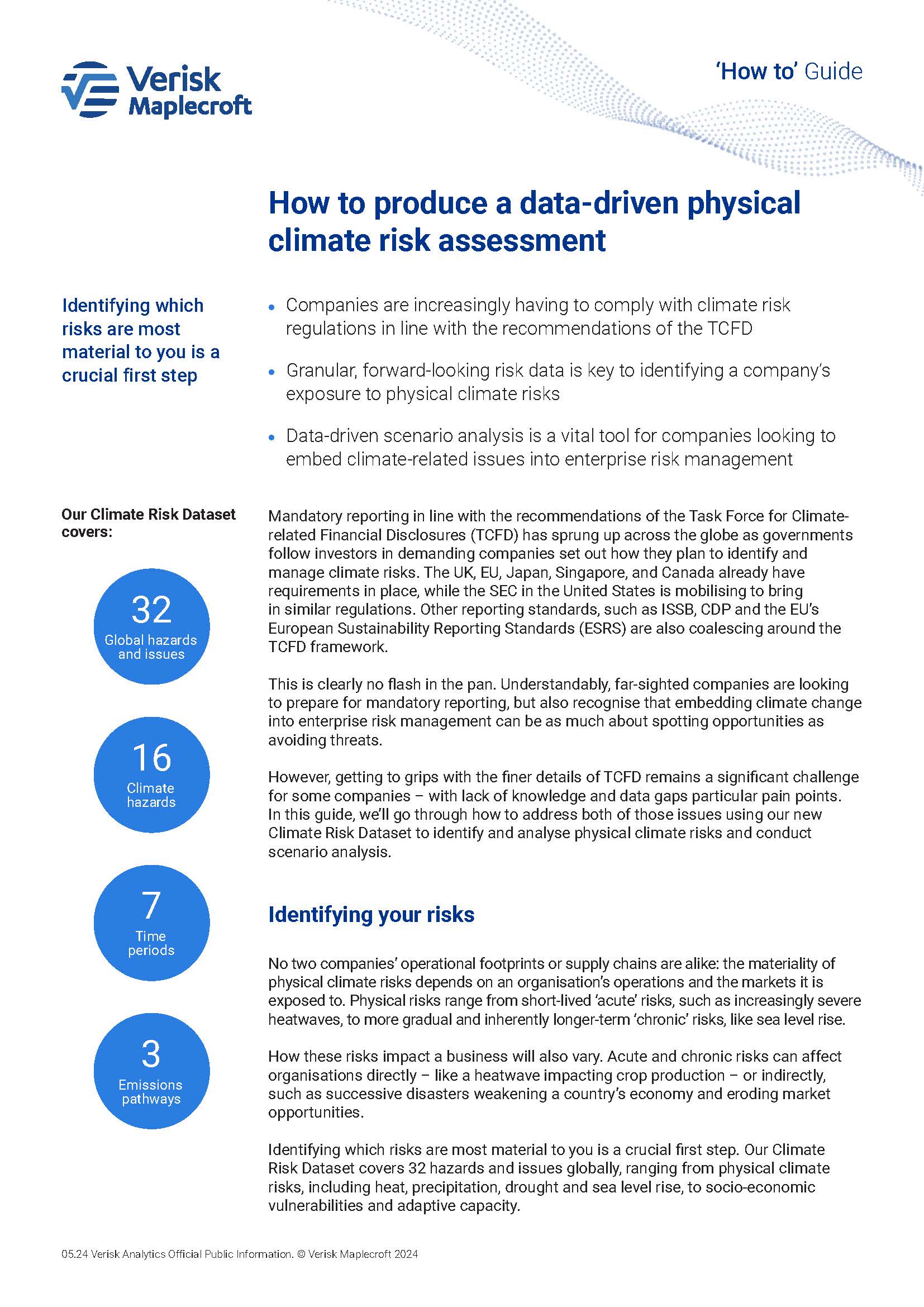Extreme temperature rises are set to hit hardest in the US cities where populations are forecast to expand at the fastest rate, according to data from our Climate Risk Dataset.
Our analysis shows that by mid-century, Houston, Orlando, San Antonio, Austin, McAllen, and Cape Coral will, on current emissions trajectories, be among the 10 US cities with the greatest increase in days exceeding 35°C, known as hot days. The number of residents in these locations is expected to grow between 19% and 27%, placing at least four million more Americans at greater risk from the impacts of heat.
Three of the remaining top 10 cities for increasing hot days – Sacramento, Jacksonville and Tampa – have expected population growth rates of between 16% and 17%, with only St Louis forecast to grow less than 15%.
Without fast-tracking emissions reduction policies, changing building standards, and investing in other adaptation measures, US cities face a combination of rising heat and populations heaping pressure on healthcare and energy infrastructure, while industry faces overloaded grids, power cuts, extra spend on cooling, restrictions on outdoor work, and declining productivity.
Figure 1: Days exceeding 35° C set to surge in fast growing US cities
Sunbelt heating up
Heat is a bigger killer than floods or hurricanes – there were 2,325 heat-related deaths in the US last year, up 117% from 1999 – and it has a huge impact on the productivity of outdoor industries, particularly in cities where tightly packed buildings and dense populations amplify its effects. California estimates that recent heatwaves each cost between USD7.7 million and USD210 million in lost labour costs on top of USD35 million in damage to roads, railways and other infrastructure.
The two demographics behind the growth in US urban populations are particularly susceptible to heat-related health issues: migrants, who commonly find work in exposed outdoor industries like construction or agriculture, and elderly people. Data suggests that across the US there are 51 million people employed in industries at high risk from heat, of which around half are in construction and manufacturing.
Only six states have an existing heat standard, leaving over 41 million workers without legal protection for exposure to extreme temperatures. The scale of the threat to health prompted the Biden White House to propose the first federal safety standard addressing excessive heat in the workplace.
Alongside health impacts, aging US power grids have struggled to meet surging energy demands during recent heatwaves, leading to a 151% increase in major blackout events between 2015 and 2021, which left industry and businesses in the dark. Extreme weather caused around 80% of all major US power outages from 2000 to 2023 and, while extreme heat alone was responsible for around 3%, that number is starting to climb. Indeed, widespread extreme heat has coincided with power outages in every US region from 2012 to 2021.
Texas, which saw severe blackouts in the scorching temperatures following Storm Beryl, is set to experience 99 hot days per year on average by 2050, according to our data – the most of any state in the country. This is the second largest state-level rise behind Florida, with Oklahoma, Louisiana and Kansas rounding out the top five biggest increases (see Figure 2). Arizona sees a less precipitous increase, but ranks among the states with the largest total number of hot days by 2050, alongside Texas, Oklahoma, and Florida.
Figure 2: Southern states face the largest increases in hot days
Texas, Florida, and Louisiana are among the 10 states with the most weather-related power outages between 2000 and 2023, so adding the extra burdens that heat brings to power grids is likely to result in yet more failures if improvements to infrastructure are not enacted.
Rising heat threats to megacities
On top of overloaded grids, power cuts and slowed economic growth, heat presents a host of threats, ranging from water scarcity and the reputational costs of being linked to shortages, right up to potential triggers for civil unrest through food price shocks and increased potential for violence. Looking outside of the US, these heat issues are particularly magnified in the world’s megacities – those with populations of 10 million or more.
By 2050, the 10 highest risk megacities for extreme temperatures will be Bangkok, Ahmedabad, Surat, Baghdad, Karachi, Chennai, Lahore, Delhi, Hyderabad (India) and Lagos. These cities are currently home to around 127 million people, but by 2040 that number could expand to more than 185 million.
India, Iraq, Pakistan and Thailand are all considered high or very high risk on our Civil Unrest (forecast) Index, which identifies the likelihood of large-scale damaging protests. Throw rising heat into the mix and the likelihood of disruption from such events only increases.
Beating the heat
Organisations with operations, investments or supply chains in US cities or global megacities may find little support in helping manage extreme heat and its effects. Altering the resilience of urban areas through building standards, infrastructure provision, or regulation hinges on the availability of funding and political will.
This means organisations likely need to take matters into their own hands to build their own resilience. Working with municipal and regional authorities is desirable, but not always possible. Instead, conducting data-driven climate risk assessments across different scenarios will be a key step in identifying both the risks companies are facing, as well as the actions they can take to mitigate exposure to extreme heat-related disruption.


